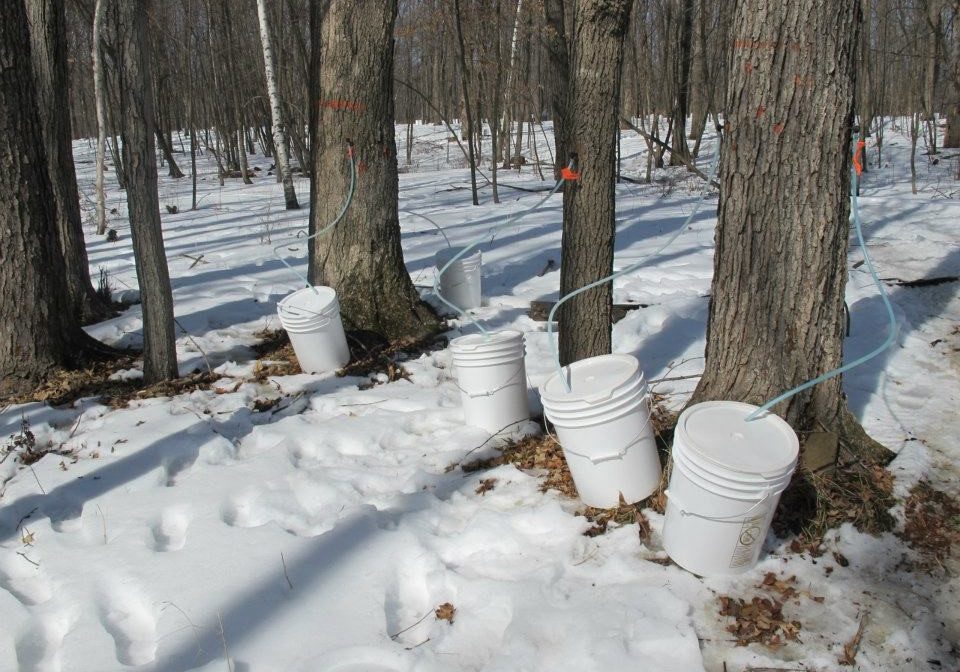Since purchasing 172 acres of land outside of Mora in 1997, Debbie and Jim Morrison have established a successful maple syrup operation. We chatted with Debbie about the ins and outs of maple syrup production for our Maple Madness Issue.
Deb and Jim Morrison never intended to harvest maple syrup when they bought their land in 1997. Yet, the abundance of sugar maples on their property prompted the couple to tap into the maple potential. In their first year of maple syrup production, the Morrisons had 30 taps. Today, Sapsucker Farms operates 1,000 taps and produces 200 gallons of maple syrup each season.


Minnesota is the western-most maple syrup producing state. The process begins the second week of March by tapping the trees. At Sapsucker Farms, they drill a hole and then tap the tree with a spile-- a spigot to retrieve sap from the maple tree. The spile is connected to a tube that delivers the sap into a five-gallon bucket. Once the trees are tapped, it’s a waiting game for the perfect weather conditions. Warm days and freezing nights act like a pump for the sap to run through the tree. Given the weather conditions necessary to collect the sap, Debbie explained that the amount of syrup collected each day is highly variable. “Some days—we call them gushers—the five-gallon bucket fills up in one day. So, we could end up with 5,000 gallons of sap in a single day!” exclaimed Debbie.

Once the buckets are filled, the process of converting sap into maple syrup begins. The Morrison’s haul the buckets to the sugar house where the sap is pumped into an old dairy bulk tank. Next, reverse osmosis removes 1/3 of the water content from the sap. As a result, the sap is already sweeter and requires less cooking time. Finally, the concentrated sap goes into the evaporator, which is a wood-burning boiling vat that boils the sap for hours, until the substance has concentrated down into maple syrup. From start to finish, the entire process takes about a day.
Generally, the maple syrup season lasts six weeks. “That being said,” explained Debbie, “it’s farming, so it varies every year. One time the season was over in four days!” The syrup season ends when the trees start to bud as the structure of the sap changes. Debbie encourages the general public to make it out to the farm during the season. This year, the Morrisons are kicking off the maple syrup season on March 14. During the maple syrup season, visitors to the farm are welcome to join in to help collect sap, watch, and learn about the process of making maple syrup. Debbie explained that one of her favorite parts of farming is sharing her farm with the general public, “we have 172 acres so we might as well enjoy it!”

